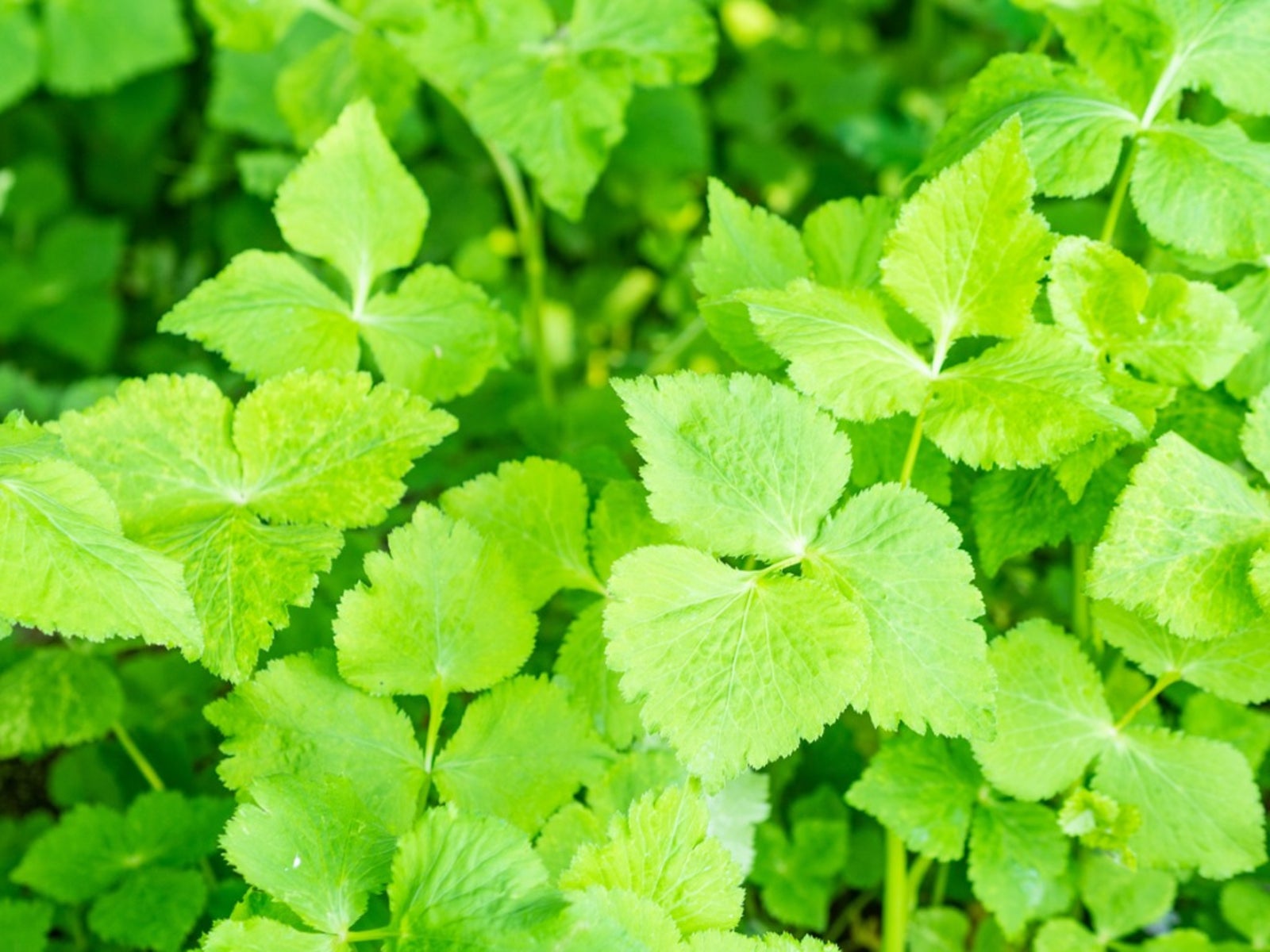Mitsuba Plant Info: Learn About Growing Japanese Parsley

Many of us cultivate herbs for use in cooking or for medicinal use. We normally plant the usual standbys parsley, sage, rosemary, mint, thyme, etc. If you’re finding your herbs a bit ho-hum, you should try introducing some Japanese Mitsuba parsley into the garden. What is Japanese parsley and what other interesting Mitsuba plant info can we unearth?
What is Japanese Parsley?
Japanese Mitsuba parsley (Cryptotaenia japonica) is a member of the Apiaceae family, which includes carrots. Although it is technically a biennial/annual herb, Japanese parsley use is more commonly cultivated as a vegetable in Japan. Mitsuba may also be found under the names Purple-Leaved Japanese Wild Parsley, Mitsuba, and Purple-Leaved Japanese Honewort. Plants are low growing, about 18-24 inches (45.5 to 61 cm.) tall by 8 inches (20.5 cm.) across with heart-shaped, lightly ruffled leaves borne off of purple/bronze stems. The plant flowers light pink in mid-summer.
Japanese Parsley Uses
Mitsuba is native to eastern Asia. It can be used in shade gardens where its foliage contrasts nicely with other shade lovers such as:
In Asian cuisine, Japanese parsley is used as a seasoning, a potency tonic, and the leaves and roots are cooked as a vegetable while sprouts are eaten in salads. All parts of the plant are edible from roots to seed; however, some people report toxic effects (dermatitis) from repeated contact and toxicity from eating large quantities of the plant. The flavor is said to be akin to celery combined with parsley, sorrel, and coriander. Yum!
Additional Mitsuba Plant Info
The lovely trefoil leaves are sometimes used in Japanese flower arranging (Ikebana). The stems are tied into a knot to decorate traditional Japanese dishes designed to bring good luck to the happy couple. This is a moderately growing plant that prefers moist conditions in shaded areas. It is not winter hardy and will die back, but have no fear, Mitsuba readily self-seeds and another crop will undoubtedly be peeking up from the soil in the spring. Some folks report that Japanese parsley can be invasive. If you want to have more control of where it will spring up, be sure to cut back the blossoms before they go to seed.
Growing Japanese Parsley
Japanese parsley can be grown in USDA zones 4-7 in, as mentioned, a moist, shady area – ideally under trees. Unlike other herbs, Mitsuba wants to stay damp but, like other herbs, doesn’t want “wet feet,” so there is a fine line here. Be sure to plant Japanese parsley in an area with good drainage. When growing Japanese parsley, sow seeds in April indoors or wait until temps have warmed outside and direct sow. Germination is fairly rapid. When the seedlings are small, they must be protected from slugs and snails, who apparently adore the flavor as well. Other than these guys, Mitsuba has no significant pests or problems. Harvest Japanese parsley a few leaves at a time in bunches just as you would any other herb. Use fresh or add to cooked dishes at the last minute. Overcooking Mitsuba will destroy its wonderful aroma and flavor.
Gardening tips, videos, info and more delivered right to your inbox!
Sign up for the Gardening Know How newsletter today and receive a free copy of our e-book "How to Grow Delicious Tomatoes".

Amy Grant has been gardening for 30 years and writing for 15. A professional chef and caterer, Amy's area of expertise is culinary gardening.
-
 Terrifically Tubular Flowers For Hummingbirds: 9 Tube-Flowered Plants To Attract Hummers
Terrifically Tubular Flowers For Hummingbirds: 9 Tube-Flowered Plants To Attract HummersGrowing tubular flowers for hummingbirds helps you create the optimum feeding conditions for your winged friends. Here are nine tubed delights for hummers
By Tonya Barnett
-
 How To Grow Hydroponic Tomatoes For Fresh Indoor Harvests – No Soil Required
How To Grow Hydroponic Tomatoes For Fresh Indoor Harvests – No Soil RequiredLearning how to grow tomatoes in water is easy and allows you to harvest fresh-home-grown produce in every season without any mess.
By Ellen Wells